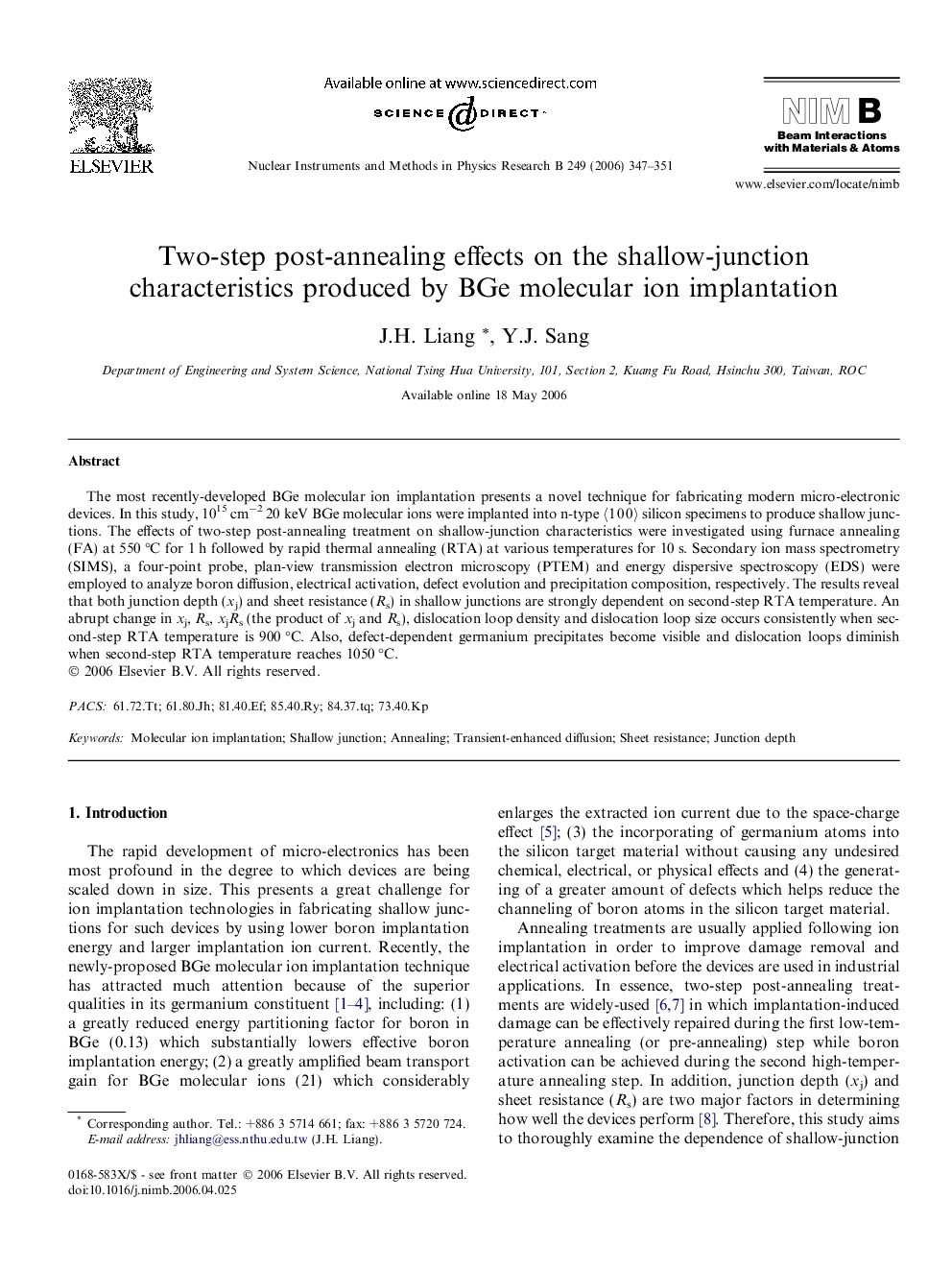| Article ID | Journal | Published Year | Pages | File Type |
|---|---|---|---|---|
| 1686515 | Nuclear Instruments and Methods in Physics Research Section B: Beam Interactions with Materials and Atoms | 2006 | 5 Pages |
The most recently-developed BGe molecular ion implantation presents a novel technique for fabricating modern micro-electronic devices. In this study, 1015 cm−2 20 keV BGe molecular ions were implanted into n-type 〈1 0 0〉 silicon specimens to produce shallow junctions. The effects of two-step post-annealing treatment on shallow-junction characteristics were investigated using furnace annealing (FA) at 550 °C for 1 h followed by rapid thermal annealing (RTA) at various temperatures for 10 s. Secondary ion mass spectrometry (SIMS), a four-point probe, plan-view transmission electron microscopy (PTEM) and energy dispersive spectroscopy (EDS) were employed to analyze boron diffusion, electrical activation, defect evolution and precipitation composition, respectively. The results reveal that both junction depth (xj) and sheet resistance (Rs) in shallow junctions are strongly dependent on second-step RTA temperature. An abrupt change in xj, Rs, xjRs (the product of xj and Rs), dislocation loop density and dislocation loop size occurs consistently when second-step RTA temperature is 900 °C. Also, defect-dependent germanium precipitates become visible and dislocation loops diminish when second-step RTA temperature reaches 1050 °C.
